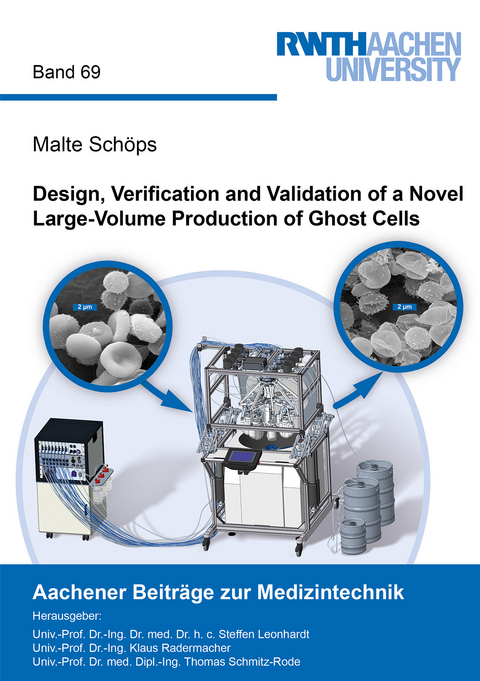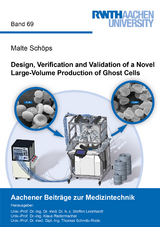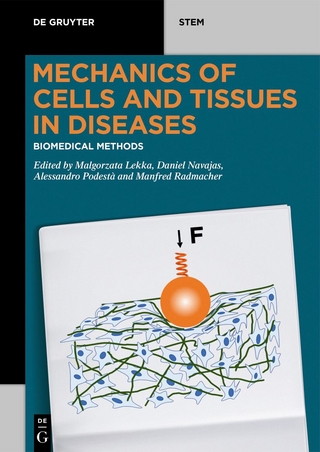Design, Verification and Validation of a Novel Large-Volume Production of Ghost Cells
Seiten
Mechanical circulatory support (MCS) is mainly based on moving actuators in the organism blood, such as the blades of blood pumps. Using these devices in the treatment of patients exposes blood to unusual stress, causing hemolysis. Hemolysis is still one of the major challenges in the development of MCS devices, apart from thrombocyte activation. As soon as shear stress exceeds a threshold value, it leads to hemolysis, destroying red blood cells by rupturing their membranes.
The fluorescent hemolysis detection method (FHDM) developed by Jansen et al. investigates hemolysis in more detail. With this method, a spatial resolution of hemolysis hotspots is realized based on ghost cells. Ghost cells are red blood cells with reduced intracellular hemoglobin. The FHDM is limited by the small amounts of ghost cells produced. Larger volumes would allow to perform this method even according to international standards and on real size models of MCS systems. The aim of this study was to develop a process engineering system using semi-automatic mechatronic technology to increase ghost cell production volume.
Until now, production volume was limited to 10.3 mL of ghost cells with a hematocrit of 30 % due to predominantly manual process steps. By implementation of a novel semi-automated large-volume batch production system in the existing method, productivity was increased 22-fold while multiplying process efficiency by 34 times. In addition to increased efficiency, process monitoring was implemented in the system to ensure consistent process parameters and semi-automation of the production process. Moreover, the properties of ghost cells as blood substitute such as rheology and deformability were maintained or even enhanced compared to manual production.
The fluorescent hemolysis detection method (FHDM) developed by Jansen et al. investigates hemolysis in more detail. With this method, a spatial resolution of hemolysis hotspots is realized based on ghost cells. Ghost cells are red blood cells with reduced intracellular hemoglobin. The FHDM is limited by the small amounts of ghost cells produced. Larger volumes would allow to perform this method even according to international standards and on real size models of MCS systems. The aim of this study was to develop a process engineering system using semi-automatic mechatronic technology to increase ghost cell production volume.
Until now, production volume was limited to 10.3 mL of ghost cells with a hematocrit of 30 % due to predominantly manual process steps. By implementation of a novel semi-automated large-volume batch production system in the existing method, productivity was increased 22-fold while multiplying process efficiency by 34 times. In addition to increased efficiency, process monitoring was implemented in the system to ensure consistent process parameters and semi-automation of the production process. Moreover, the properties of ghost cells as blood substitute such as rheology and deformability were maintained or even enhanced compared to manual production.
| Erscheinungsdatum | 12.04.2022 |
|---|---|
| Reihe/Serie | Aachener Beiträge zur Medizintechnik ; 69 |
| Verlagsort | Düren |
| Sprache | englisch |
| Maße | 148 x 210 mm |
| Gewicht | 204 g |
| Themenwelt | Medizin / Pharmazie |
| Technik ► Medizintechnik | |
| Schlagworte | Automation • fluorescent hemolysis detection method • Ghost cells • Hemolysis • spatially resolved hemolysis detection |
| ISBN-10 | 3-8440-8543-2 / 3844085432 |
| ISBN-13 | 978-3-8440-8543-3 / 9783844085433 |
| Zustand | Neuware |
| Haben Sie eine Frage zum Produkt? |
Mehr entdecken
aus dem Bereich
aus dem Bereich
Schulungs- und Fortbildungsnachweis zur Dokumentation von …
Buch | Softcover (2024)
TÜV Media GmbH TÜV Rheinland Group (Verlag)
6,53 €
Moderne Verfahren in Diagnostik und Therapie
Buch (2023)
Spektrum der Wissenschaft (Verlag)
9,30 €
Buch | Softcover (2023)
De Gruyter (Verlag)
94,95 €




